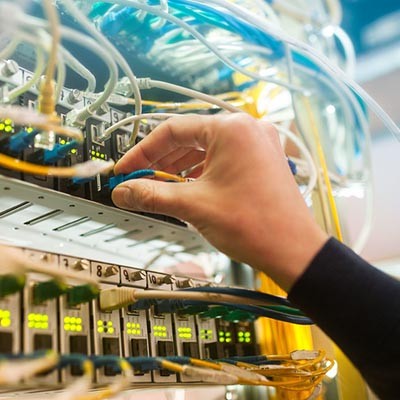It’s not always easy to build a network that is both robust and secure, but this doesn’t make it any less necessary, not with so many of your critical business functions relying on connectivity. With so many devices accessing your network at any given time, you need to have a concrete understanding of how to keep your network secure while still keeping your network running efficiently.
Global Tech Solutions Blog
We live in a world that is constantly connected, be it through a wireless connection or through your smartphone’s mobile data. This makes it especially important to practice appropriate cybersecurity practices while you’re connected to a wireless network. Let’s go over some wireless cybersecurity best practices you can keep in mind when using your wireless technology.
The COVID-19 pandemic has a lot of people spending a lot of time at home. As a result many people are getting more out of their Internet service. With school starting back up and people still working from home, the Internet needs to be available for everyone in the house. One of the best ways to make this happen is through Wi-Fi. Oftentimes, however, setting up a Wi-Fi connection can be troublesome. Today, we thought it would be useful to give you a couple of tips that can help you get the most out of your Wi-Fi network at home or in the office.
The average person’s mobile plan comes with a data cap. It’s for this reason the Wi-Fi hotspot is looked on as an essential tool, especially with so much content available nowadays. With 5G on the horizon, some reports have suggested that Wi-Fi will be phased out by ubiquitous wireless Internet access. Turns out, in the immediate future, the Wi-Fi hotspot isn’t going anywhere.
The way your business accesses data is changing. Just a few years ago, you couldn’t imagine that you would have a comprehensive strategy to keep data secure when sending and receiving it wirelessly, but today wireless transmission methods have become more secure, reliable, and fast. Today, we’ll take a look at the difference between wired and wireless connections in the modern business.
There are times when people take their technology for granted. One of the most under-the-radar, yet crucial parts of a business’ technology infrastructure is the networking equipment. What we mean by this is the cables, switches, and routers that connect computers to the network and to the Internet. This month, we will take a look at typical office networking found in 2019 and the technologies that are primed to replace them.
If there is one thing that we all know about 5G it is that it’s coming? It’s been coming for years. For a decade, the next biggest thing has been 5G. We’ve routinely heard statements like “When we get 5G…” Many of which came from people that had no idea what the “G” in 5G even means (It literally stands for “generation”). Today, we’ll separate the facts from the fiction to get you up to speed on 5G.
When you turn on your device’s Wi-Fi capabilities, do you ever take the time to look at some of the names of your neighbors’ connections? You’ll see some rather boring names as well; some might just use the name of their organization or the family’s name, or even just the default SSID used by the router. The fact of the matter is that a wireless network name that’s easy to gloss over is a best practice for network security.
Mobility is proving to be a major pain point for businesses, especially when it comes to implementing new technology solutions. It’s become crucial to consider how mobility can influence the growth of your business and improve operations, particularly with the cloud gaining ground and mobile devices becoming omnipresent in the workplace. How will your business learn from this influx of mobility?










